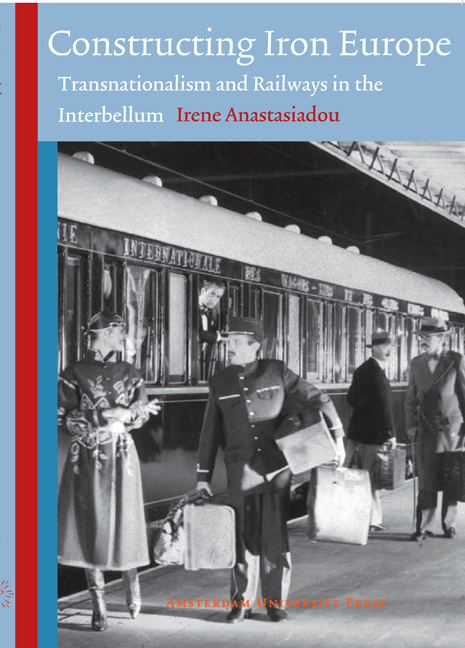Book contents
- Frontmatter
- Acknowledgements
- Contents
- Abbreviations
- 1 Introduction
- 2 Europe in Crisis and Railway Visions
- 3 Shifting Railway Regime
- 4 European Integration, European Fragmentation
- 5 Constructing the National, Constructing the European: Greece
- 6 Uncovering Railway Europe
- Bibliography
- Summary
- Curriculum Vitae
- Appendix I Timeline of Conferences and Conventions held in the Early years After the war, Concerning Railways:
- Appendix II Schedule of International Expresses in the 1930s
- Appendix III List of Illustrations
4 - European Integration, European Fragmentation
- Frontmatter
- Acknowledgements
- Contents
- Abbreviations
- 1 Introduction
- 2 Europe in Crisis and Railway Visions
- 3 Shifting Railway Regime
- 4 European Integration, European Fragmentation
- 5 Constructing the National, Constructing the European: Greece
- 6 Uncovering Railway Europe
- Bibliography
- Summary
- Curriculum Vitae
- Appendix I Timeline of Conferences and Conventions held in the Early years After the war, Concerning Railways:
- Appendix II Schedule of International Expresses in the 1930s
- Appendix III List of Illustrations
Summary
Railways as Carriers of Long Distance Traffic
In the previous chapter I discussed the establishment of an international railway regime after the war and the influence of political considerations in this regime. In this chapter, I look more closely at the working of the railway networks to explore the internationalization of railways in inter-war Europe. In particular, I focus on two aspects. First, I look at how international railway passenger services developed throughout the inter-war years. Stone has argued that by 1930 much freight rolling stock and a substantial fleet of passenger vehicles could run freely on large parts of the network. In this chapter, I examine the evolution of such international railway passenger traffic. More specifically, I look at the international passenger services provided by the Compagnie international des wagons-lits et grand express europeennes (henceforth Wagons-Lits), examining not only the changing political situation in Europe, but also the changes in the field of transport that to some extent also resulted from the war. The choice to focus on railway passenger services instead of goods services was a result of the difficulty of collecting sources in the case of the latter. However, looking at how international passenger railway traffic developed in the inter-war years is an important indicator of the overall development of international railway traffic. Second I look at how the international railway regime responded to appeals for technical interoperability of networks in relation to the introduction of new technologies. In the previous chapters, I discussed an array of bodies that promoted the technical standardization of the railway networks in Europe, as well as research in specific fields. This was the case of the German Verein, to cite a key example, but also of the intergovernmental conference on the technical unity in rail transport. In this chapter, I look at the response of such bodies to appeals for the establishment of international agreements concerning new technologies that had started being introduced at a national level. I look at two cases: electrification and the introduction of automatic couplers in the railway networks of Europe.
- Type
- Chapter
- Information
- Constructing Iron EuropeTransnationalism and Railways in the Interbellum, pp. 153 - 200Publisher: Amsterdam University PressPrint publication year: 2012



